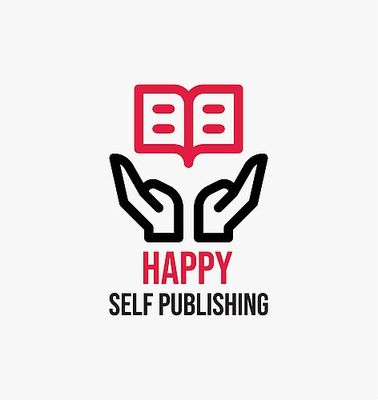What Ever Happened to the American Dream?
A fascinating look into the meaning we bring to home ownership. Sharing our unique cultures, social and personal preferences of what home ownership provides us through engineering of financial programs
Overview:
My Castle My Jail, Whatever Happened to the American Dream?, tells the story of how dreams are possible and nightmares are created because of social, cultural and personal interpretations of what it means to own a home. In my book, I share the emotional highs of owning a home because of the engineering of financial programs that feed global markets and local economies. How yesterdays homes are today's investment options. What does homeownership mean to you?
Its creation and growth into today’s global financial powerhouse touch every facet of our economy, moreover our lives. My Castle, My Jail, Whatever Happened to the American Dream? takes into account the historical events from the beginning of residential mortgage banking and its economic impact and emotional 'tripping' on the prospective home- buyer and homeowner. Global market forces, national economic policies result in the market and the psychological expectations and behaviour from the consumers perspective. Notable social and economic events will be used to illustrate the storylines.
The narrative supported by charts, tables and illustrations provide yet another means for the reader to understand how the financial instruments were created and what purpose they serve. (Corporate financing, secondary markets, financial conduits, homeownership bonds, financial leveraging and the many layers of insurance. Local and global financial interests. Ancillary industries that support and feed off of the mortgage banking industry, while gaining the insights and perspective from a 'consumer/home owner' just like them.
My Castle, My Jail, Whatever Happened to the American Dream? also tells of a families journey across two continents, three generations and a multitude of decisions along the way that dovetails with the historical events of the global market of residential homeownership. My family’s personal story accounting for the immigration from the West Indies to Europe after the Second World War, subsequent immigration to
the USA in 1969 and the migration of my wife and me living in six homes in three states.
My Castle My Jail, Whatever Happened to the American Dream? takes the reader through two stories. One directly influencing the other. It is a wealth of knowledge from a historical perspective and a humanitarian walk through time, places and events that has crafted one families experience and impacted three generations. Books web site: http://mycastlemyjail.com/
List of Sample Chapters
Chapter 1. The human need for a place to call home
From cave to penthouse, leverage
Chapter 2. Why Residential Home Ownership?
Social prestege and wealth building
Chapter 3. Who, What, When, How and Why?
What it meant throughout time
Chapter 4. The House of FHA & VA
Gov't helping people
Chapter 5. The early days
Attitudes towards homeowners
Chapter 6. Brother and Sister - FannieMae and FreddieMac
Investors find a way to leverage capital
Chapter 7. Legislation to expand its scope
Crying out to population demand
Chapter 8. Secondary market for sub-prime
How to raise funds
Chapter 9. Players come from everywhere
Local, regional and int'l markets
Chapter 10. You the consumer
How to educate and protect yourself
Chapter 11. So you still want to buy a home
The in's and out's of homeownership
Chapter 12. New tools of the trade
From 2/3 to 16th of a penny hedging grows
Chapter 13.Future expectations, same psychology
What homeownership? A fundamental change
Chapter14. When the consumer wins,
Understanding the options
My primary audience is potential buyers and current home owners. Secondary market will be those serving the industry, from REALTORS, support staff, Title companies, Appraisers, associated services like renovation and construction companies. Educational should also be included for those seeking real estate management certification. Third level would be other service providers that may enter into an affiliate agreements to raise funds out of the sale of the books.
From my book website, Facebook community and business social media platforms I aim to sustain ongoing engagement discussing aspects about my book
10K + ReferralKey
1950 LinkedIn
5K Facebook
267 Twitter
43 YouTube
...and other platforms from which to engage my target audience.
Competing Books
⌂ “The Little Book of Economics: How the Economy Works in the Real World”, by Greg I. (John Wiley & Sons; 1st edition 2010)
⌂ “Getting to Closing! Insider Information To Help You Get a Good Deal On Your Mortgage”, by Cheryl L. Peck. (Author House; 1st edition March15, 2009)
⌂ “Buffet The making of an American Capitalist”, by Roger Lowenstein Hardcover (Random House; 1995)
⌂ “Outrageous Fortunes: The Twelve Surprising Trends That Will Reshape the Global Economy”, by Daniel Altman. (Times Books; 1st edition)
The common difference among these books and mine is that I blend the social and cultural juxstaposition with the financial and economic forces that shifts whole economies as to the meaning of homeownership and family dynamics in society. The other books focus more on the financial only aspects.

Ronald has received two Senate Citations for Community building in Homeownership and spent 13+ years as a licensed correspondence lender, underwriter and housing consultant.
Dear Author,
You worked hard to write your manuscript, and you know that expert assistance is needed to ready it for the market. But perhaps you didn’t realize that working with a publisher is no longer necessary—especially publishers who charge fees to produce your book upfront and "share" more of your revenue whenever a book is sold.
1106 Design is an author services company that has served over 4,000 authors since 2001. We offer all the editorial and design services you’d expect from a publisher, transforming your manuscript into a polished book. But here's the difference: we help you secure print-on-demand printing and worldwide distribution in YOUR name. This means you'll earn several dollars more for every book sold instead of a meager “royalty” and never lose control of your book or your book files.
We understand that your book is not just a passion project but also a potential source of income. No two books or authors are alike. That's why we'll customize a package of services tailored to your needs at affordable prices, starting at $5,555. And here's the best part: after this one-time investment, every penny of revenue from book sales is deposited directly to your bank account, never to ours first.
If this sounds like a better way to publish your book, I invite you to browse our services, design samples, no-surprises pricing, outstanding customer reviews, and educational articles at https://1106design.com. You can download a free PDF of my book, "Publish Like the Pros: A Brief Guide to Quality Self-Publishing and an Insider's Look at a Misunderstood Industry," and request a free, no-obligation consultation.
1106 Design is rated A+ by the Better Business Bureau. We are a “Highly Recommended Expert” at IngramSpark.com and rated "Excellent" at Alli, The Alliance for Independent Authors, at SelfPublishingAdvice.org. Alli's "watchdog list" of the best and worst publishing services companies is an invaluable resource.
How can we serve you today?
Sincerely,
Michele DeFilippo, owner

250 copies • Partial manuscript.
Atmosphere Press is an independent publisher dedicated to author rights. We publish in all genres and have an exceptional editorial, design, and promotional staff. We stand for Honesty, Transparency, Professionalism, and Kindness. We want our authors and their readers to be blown away when they first hold that book in their hands. It needs to look good inside and out, and feel good to the touch. And, of course, the words need to be top-notch, and our editors are devoted to making that the case.

100 copies • Partial manuscript.
Bookmobile provides book printing, graphic design, and other resources to support book publishers in an ever-changing environment. Superior quality, excellent customer service, flexibility, and timely turnarounds have attracted nearly 1,000 satisfied clients to Bookmobile, including trade houses, university presses, independent publishers, museums, galleries, artists, and more. In addition, we manage eBook conversions and produce galleys, and regularly provide short-run reprints of 750 copies or fewer for major publishers such as Graywolf Press.

100 copies • Completed manuscript • Looking for novels, memoirs, fantasy, and other fiction.
Crescendo Publishing is a boutique-style, concierge VIP publishing company assisting entrepreneur authors with writing, publishing, and promoting their books for the purposes of lead-generation and achieving global platform growth, then monetizing it for even more income opportunities.

100 copies • Completed manuscript.
Happy Self Publishing has helped 500+ authors to get their books self-published, hit the #1 position in the Amazon bestseller charts, and also establish their author website & brand to grow their business. And the best thing is, we do all this without taking away your rights and royalties. Let's schedule a call to discuss the next steps in your book project: www.meetme.so/jyotsnaramachandran

Chapter 2. The Origins of Residential Financing
The Origins of Residential Finance Back in the days of Og, nobody borrowed money to buy a cave. You either owned it or you didn’t. In a pre-monetary age – that is, for most of human life on earth – this made sense for many reasons. The future was highly uncertain; the idea that you would buy something and extend payments over thirty years would have seemed ludicrous.
Back then, you’d be crazy to lend anything to a borrower who, statistically, might be dead tomorrow. Then there was the question of value. Without an accepted medium of exchange, how could you determine what a cave was worth? A cow? Two cows? Fifty bushels of wheat? Fifty bushels of wheat every year for ten years? Anyway, that last calculation sounds more like rent. Anyone who owned a cave would never dream of giving up ownership and being paid over a period of years.
The concept of buying a dwelling and paying for it over time only begins to make sense when you’ve got a medium of exchange that is universally accepted and endures over time. It works only when you can assign an objective value to something and have some assurance that the scale you’re using is not going to change in ten or twenty years. You need to be able to say, “This cave or this house is worth x pieces of gold or specie, and in the future its value can be measured using the same scale.”
Any discussion of the residential finance industry, and how property is bought and paid for over time, needs to begin with the concept of finance itself. For simplicity, I’ll skip the topic of commodity money, wherein the agreed-upon medium of exchange is not merely representative of something of value (as is the case with our paper money), but actually is something of value. For example, in prisons, where the possession of cash is typically not allowed, inmates buy and sell commodities with agreed-upon methods of exchange such as cigarettes. In the American colonial west, commodities such as beaver pelts, fish, corn, and wampum were mediums of exchange. In South Carolina, rice was used as money, and a standard use of commodity money was tobacco. A pound of tobacco was a unit of currency in Virginia, with warehouse receipts in tobacco circulating as money that was fully backed by the actual tobacco stored in the warehouse.
There’s another very good reason why over thousands of years of human history there wasn’t much borrowing and lending of money. In general, scholars and priests alike condemned the practice of profiting from the activity of lending money – that is, from the charging of interest on loans, which is the basis of today’s residential finance industry.
And here it would be useful to draw a very important distinction between charging a fee for lending, and charging compound interest.
Fee based lending is very simple – I lend you something, and after a period of time you give it back, and as payment for this service I charge you a set fee. Therefore, if I lend you ten cows, at the end of the season you give me back the ten cows plus two calves. If I lend you ten dollars, you pay me back the ten dollars plus a dollar as my profit. It doesn’t matter very much when you pay me back because my fee isn’t going to change.
Compound interest adds the element of time. The longer you keep my money, the higher my fee. My fee is calculated as a percentage of the loan multiplied by the length of time you need to pay it back. The key is that the interest you owe me is added to the principal. For example, let’s say you borrow one hundred dollars at five percent interest, compounded daily. If you repay the loan in one year, you will pay me a total of $105.13. If you pay me nothing for ten years, and then pay it back all at once, at the end of ten years you’ll pay me $164.87.
One problem with compound interest is that over very long periods of time, the numbers become absurd. That hundred-dollar loan at five percent interest? If you paid me back after one hundred years, you’d owe me $14,836.23. After two hundred years it would be over two million dollars. In 1836, an American lawyer by the name of John Whipple published The Importance of Usury Laws, where he pointed out the impossibility of sustaining long-term usury. He wrote: “If five English pennies … had been … at five per cent compound interest from the beginning of the Christian era until the present time, it would amount in gold of standard fineness to 32,366,648,157 spheres of gold each eight thousand miles in diameter, or as large as the earth.”
The practice of charging a fixed fee for loans did exist in ancient times, and was referred to in the Hammurabi Code of about 1800 BCE. Nevertheless, opposition to money lending was widespread, primarily on the grounds that it was unethical to receive value without labor. Attitudes towards lending in general and the charging of interest in particular varied from culture to culture and century to century.
In ancient India both Buddhists and Hindus condemned lending. According to a law set forth by Vashishta, a Hindu lawmaker who lived around 500 BCE, Brahmin or Kshatriya castes were prohibited from charging interest on any loan regardless of amount.
Other religious systems in the ancient Near East, and the secular codes arising from them, did not forbid lending with interest. Some cultures regarded inanimate matter as living, just like plants, animals and people, and capable of reproducing itself. Hence, if you lent commodity money of any kind, it was legitimate to charge interest. “Food money” in the form of dates, olives, seeds, or animals was lent out as early as 5000 BCE. Among the Phoenicians, Mesopotamians, Egyptians, and Hittites, interest was legal and the rates were often fixed by the state.
Aristotle, who lived in the period 384-322 BCE, was opposed to the practice of charging any interest on a loan no matter how negligible the interest rate. Contemporaries who favored legalizing the charging of interest asserted that usury was practiced by Sumerians, who asked for calves in return for the loan of cows. Aristotle argued that unlike cows, money is inert and does not by itself beget more money the way cows beget calves. Aristotle denounced usurers by saying, “Those who ply sordid trades, pimps and all such people, and those who lend small sums at high rates. For all these take more than they ought, and from the wrong sources. What is common to them is evidently a sordid love of gain.”
Cato the Elder, in his book De Re Rustica, wrote, “‘What do you think of usury?’ – ‘What do you think of murder?’”
Judaism’s view of interest was similarly negative. According to the teaching of the Halakha, or the collective body of the Jewish religious law, which included Biblical, Talmudic and Rabbinic laws, the charging of interest was forbidden.
The prophet Ezekiel said, “That has withheld his hand from the poor that has not received from money interest nor increase, has executed my judgments, has walked in my statutes; he shall not die for the iniquity of his father, he shall surely live.” (Ezekiel 18:17)
Some authorities asserted that interest could be charged to strangers but not between Hebrews: “Thou shalt not lend upon interest to thy brother: interest of money, interest of victuals, and interest of anything that is lent upon interest. Unto a foreigner thou mayest lend upon interest; but unto thy brother thou shalt not lend upon interest; that the Lord thy God may bless thee in all that thou puttiest thy hand unto, in the land whither thou goest in to possess it.” (Deuteronomy 23:19-20)
Nevertheless, attitudes evolve, and we will soon see how the beliefs of Jews changed in the late Middle Ages, in part because of persecution by Christians.
The medieval Christian church opposed lending with interest. Clerics were forbidden from taking usury and laymen were condemned if they engaged in it. In 850 CE, the Synod of Paris excommunicated all usurers. Thomas Aquinas, the influential thirteenth century Italian theologian who is considered by many Catholics to be the Catholic Church’s greatest theologian and philosopher, vehemently opposed the practice of charging interest on loans. He wrote in his Summa Theologica:
“Of the Sin of Usury, Which is Committed in Loans: “
To take usury for money lent is unjust in itself, because this is to sell what does not exist, and this evidently leads to inequality, which is contrary to justice…. Now money, according to the Philosopher, was invented chiefly for the purpose of exchange: and consequently, the proper and principal use of money is its consumption or alienation whereby it is sunk in exchange. Hence it is by its very nature unlawful to take payment for the use of money lent, which payment is known as usury: and just as a man is bound to restore other ill-gotten goods, so is he bound to restore the money which he has taken in usury…”
The argument being advanced is that money had no intrinsic value; it is like the grease that goes between the axle and the wheel that permits movement. Take away the axle and the wheel, and the grease becomes pointless.
The author hasn't added any updates, yet.
$17
0 readers
1 Copy of my autographed limited edition, first run of my book "My Castle, My Jail! What Ever Happened to the American Dream",
+
Signed bookmark
+
Free invitation to the book launch.
+
You ALSO get exclusive access to updates and an invite to join my community.
Includes:
$30
0 readers
2 Copies (One for you and one for a friend or colleague) of the autographed limited edition of my book "My Castle, My Jail! What Ever Happened to the American Dream",
+
Free invitation to the book launch.
+
You ALSO get exclusive access to updates and an invite to join my community.
Includes:
$46
0 readers
3 copies of the autographed limited edition of my book "My Castle, My Jail! What Ever Happened to the American Dream",
+
Free invitation to the book launch
+
A Big Thank you mention in the book.
+
You ALSO get exclusive access to updates and an invite to join my community.
Includes:
$76
0 readers
5 copies of the autographed limited edition of the book "My Castle, My Jail! What Ever Happened to the American Dream",
+
Free invitation to the book launch
+
Your name mentioned in the book
+
a FREE one hour <<Personal & Professional Strategy Session>> session (zoom)
+
You ALSO get exclusive access to updates and an invite to join my community.
Includes:
$141
0 readers
10 copies of the autographed limited edition of the book "My Castle, My Jail! What Ever Happened to the American Dream",
+
invitation to the book launch
+
Your name mentioned in the book
+
DISCOUNTED invitation to join my online course with a personal walk through "Success" valued at over 275USD
+
You ALSO get exclusive access to updates and an invite to join my community.
Includes:
$3612
0 readers
250 copies with a 15% Discount and autographed limited edition of the book "My Castle, My Jail! What Ever Happened to the American Dream",
+
Free invitation to the book launch
+
Your school mentioned in the book
+
FREE invitation to join my online course with personnel walk through valued at 275USD
+
FREE Invitation to attend my weekend retreat or private Mastermind in TBD Valued at 2300USD
Includes:
$3824
0 readers
250 copies with our exclusive 10% Discount
+
My autographed limited edition "My Castle, My Jail! What Ever Happened to the American Dream", for you and your team
+
Free invitation to the book launch for you and 6 members of your team
+
Your company's name mentioned in the book as a Sponsor
+
A half day workshop Mapping Your Mind 4 Success that addresses how we give meaning to people, places and events in our lives that anchor us to perspectives that need to be re-evaluated over time.
+
Exclusive discounted Coaching service for six months for 20 employees on managing change thru strategic communications valued at over 100K at market rates
Includes: